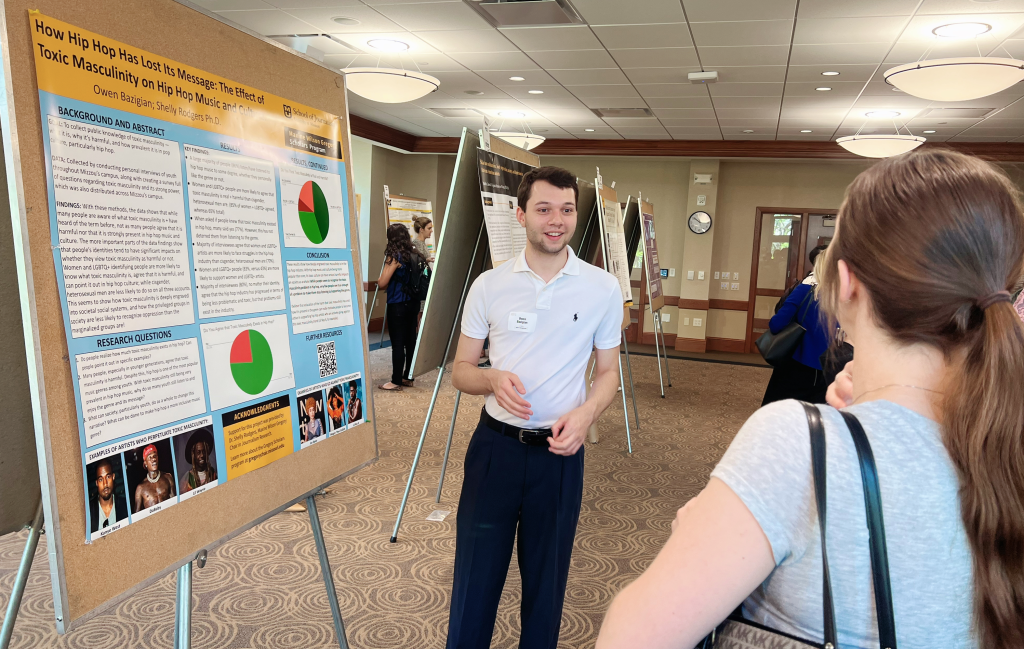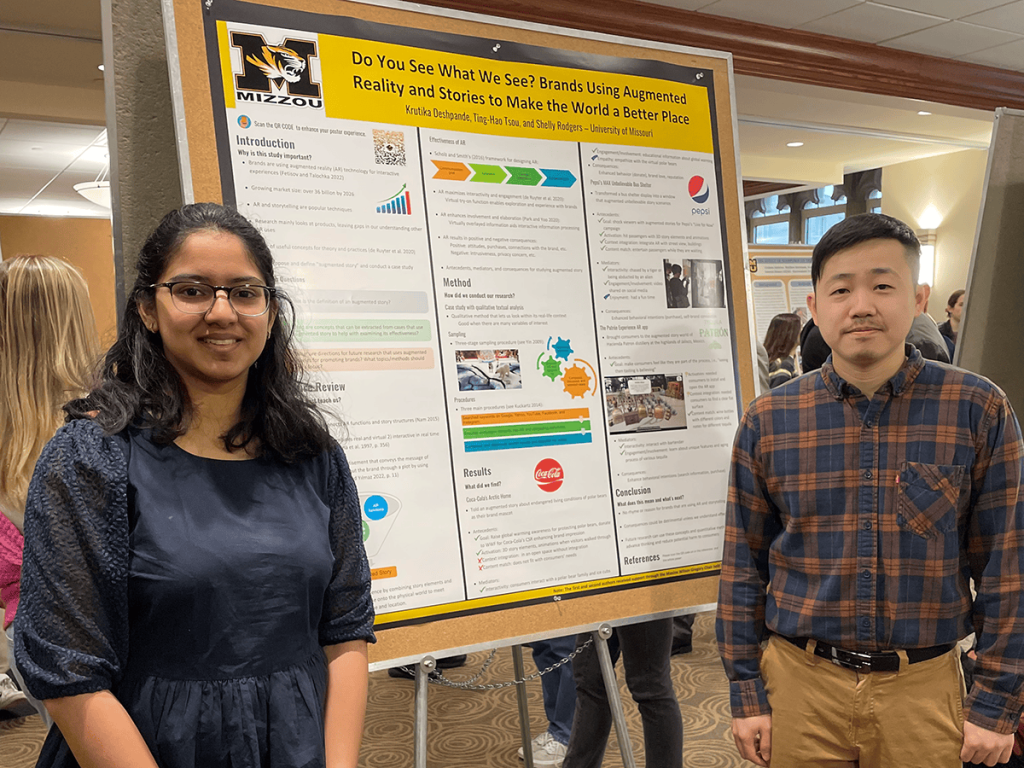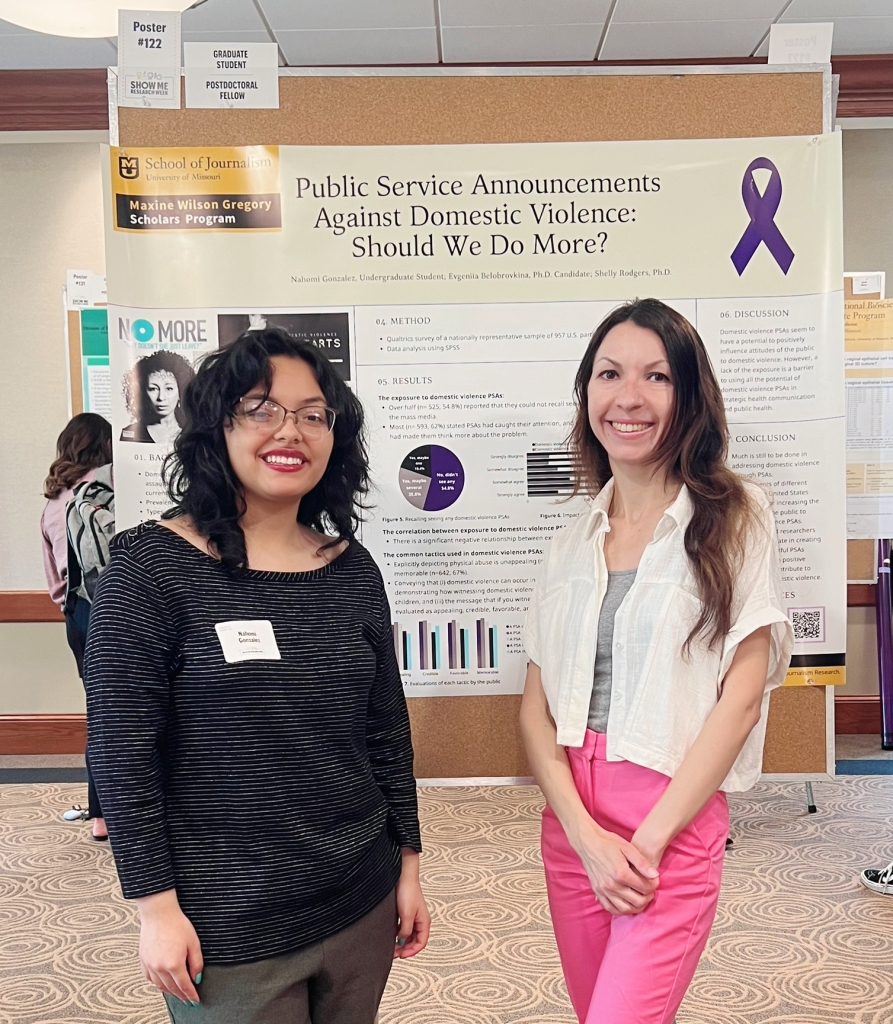Toxic Masculinity of Hip Hop Music Culture
Owen Bazigian and Shelly Rodgers, Ph.D.

Abstract: This research’s goal was to collect public knowledge of toxic masculinity — what it is, how harmful it is, and just how prevalent it is in pop culture, particularly hip hop. The data was collected by conducting personal interviews of youth among Mizzou’s campus, along with creating a survey full of questions regarding toxic masculinity and its strong power, which was also distributed to youth among Mizzou’s campus. With these methods, the data shows that while many people are aware of what toxic masculinity is/have heard of the term before, not as many people agree that it is harmful nor that it is strongly present in hip hop music and culture. The more important parts of the data findings show that people’s identities tend to have significant impacts on whether they view toxic masculinity as harmful or not. Women and LGBTQ+ identifying people are more likely to know what toxic masculinity is, agree that it is harmful, and can point it out in hip hop culture; while cisgender, heterosexual men are less likely to do so on all three accounts. This seems to show how toxic masculinity is deeply engraved into social systems in society, and how the privileged groups in society are less likely to recognize oppression than the marginalized groups are. Another significant conclusion from the data is that the younger the person is, the more likely they are to recognize what toxic masculinity and its harmful effects are. This seems to show how society as a whole seems to be becoming more liberal and accepting of non-traditional gender identities in the hip hop industry!
Understanding the Public’s Knowledge and Trust of Health Advertising
Sophie Carite; Justin Willett, M.H.A.; Shelly Rodgers, Ph.D.

Abstract: In the wake of the COVID-19 pandemic, advertisers and researchers are increasingly focused on the role of health advertising in modern society. This type of advertising includes everything from public service announcements about public health issues to promotions for drugs, healthcare, and products and services that claim health benefits. The purpose of this research is to understand what the public considers health advertising and how people think about the trustworthiness and value of health advertising. Health advertisers must understand how the public perceives their work in order to create more effective advertising promotions. This study consisted of a survey distributed to a representative sample of 1,018 people living in the United States. Most respondents reported that drug advertising, weight loss and fitness advertising, and nutrition and food advertising came to mind when they heard the term health advertising. When asked about regulation of health advertising, respondents expressed disagreement with the idea that health advertising shouldn’t face increased regulation, but they expressed confidence in their ability to assess the legitimacy of claims made by health advertising. Finally, respondents indicated that health advertising is useful, positive, and valuable, but questioned its completeness, clarity, and reliability. This research shows that health advertisers have more work to do to establish their work as a reliable source of health information. This research has implications for the practice and study of advertising. Advertisers and scholars should focus efforts on determining how to increase trust in health advertising.
Use of Augmented Reality and Storytelling by Brands to Enhance Experience and Connect with Consumers
Krutika Deshpande, B.T., Ting-Hao Tsou, Doctoral Candidate (ABD), and Shelly Rodgers, Ph.D.

Abstract: Augmented Reality (AR) is a growing technology that allows advertisers to use it combined with storytelling techniques to connect consumers with their brands. AR is becoming more influential in promoting brands, particularly in brand storytelling. However, there is not enough research on how AR can work with brand storytelling to affect consumer experiences of viewing a brand story. To fill this gap, the authors propose a new concept named “augmented story” for identifying and specifying it in advertising. With a mixed-method design, we conducted 1) a qualitative textual analysis on three real-work cases of using the augmented story for promoting products/brands to identify the potential concepts that can be used to further study the effectiveness of the augmented story; and 2) a national quantitative online survey with 1,011 U.S. participants to investigate how these concepts influence consumers’ responses toward the brand using the augmented story. Results identified three main concepts and showed the positive influence of consumers’ perceptions of usefulness and enjoyment, and the negative impact of privacy concerns of the augmented story on consumers’ attitudes and purchase intentions toward the brands. Although the use of the augmented story could cognitively and emotionally let consumers have positive responses toward the brand, a possible drawback is consumers’ concerns about their privacy while viewing the augmented story could also be aroused, suggesting care due to possible adverse effects on both brands and consumers should be taken.
Seeking the Public Health Angle in Missouri Newspaper Coverage of the Opioid Crisis
Cate Enrooth, B.J.; Justin Willett, M.H.A.; Shelly Rodgers, Ph.D.
Abstract: In 2020, more than 68,000 people in the United States died from drug overdoses involving opioids. In the same year, drug overdose was the leading cause of death among Missouri adults, and more than 70% of those overdose deaths involved opioids. One important way the public comes to understand this public health crisis is through news media portrayals of its causes, consequences, and solutions. The purpose of this study is to evaluate Missouri newspaper coverage of the opioid crisis to understand (1) the prevalence of information about causes, consequences, costs, and solutions; (2) the perspective of stories (U.S. vs. state) and story sources; and (3) depictions of opioid users (demographic and geographic information). Only by including information about causes, consequences, costs, and solutions will news coverage provide the public with an accurate understanding of the opioid crisis. This study used a quantitative content analysis method to evaluate 53 Missouri newspaper stories about the opioid crisis that were published between Oct. 1, 2017, and June 30, 2019. Results showed that fewer than half of the stories (n = 20, 37.7%) mentioned why people turn to opioids. Stories with a national (vs. state) perspective were more likely to include solutions (treatment in particular) (p < .05). More than 70% of the stories analyzed used an expert source, and nearly half (49.1%) of those expert sources were representatives from a health department. This study found a lack of the public health angle in Missouri newspaper coverage of the opioid crisis. In order for news coverage to include more contextual information about the opioid crisis, journalists and public health professionals will need to work together to emphasize the public health angle.
Public Service Announcements Against Domestic Violence: Should We Do More?
Nahomi Gonzalez; Evgeniia Belobrovkina, Doctoral Candidate (ABD); Shelly Rodgers, Ph.D.

Abstract: Domestic violence is a global public health problem that affects the lives of millions of people. Public service announcements (PSA) serve as an essential tool in addressing domestic violence through strategic communication. Yet there are gaps in the literature regarding, first, the public’s exposure to PSAs against domestic violence at the national level in the United States (i.e., whether and how they reach the public) and second, what are the public’s attitudes to strategic communication tactics commonly used in such PSAs. To fill in those knowledge gaps, a nationwide survey with approximately 1,000 participants, which are representative of the U.S. population, was conducted in the spring of 2023. The study indicated that more than half of the respondents (n= 522, 54.5%) reported that they had either never come across or could not recall encountering any media messages regarding domestic violence via mass media.
When asked about tactics, results showed respondents thought explicitly depicting physical abuse is not appealing but creditable and worth remembering. Additionally, specific tactics including highlighting that domestic violence could occur in any family, even in wealthy ones, and in particular, conveying the message that if someone witnesses physical abuse, they should immediately call the police or hotline was perceived as appealing, credible, favorable, and also memorable.
Results also show a lack of exposure of PSAs against domestic violence to the public although 85% of respondents thought domestic violence against women in the U.S. is common. To promote awareness about domestic violence, it is necessary to augment the frequency of PSAs that address the issue of domestic abuse, by incorporating more PSAs that utilize effective strategies. Results suggest health messages should underscore the significance of public health, as this study has implications for the field of strategic communication theory, practice, and policy.
An Exploration of Consumer Attitudes Toward Brands’ Diversity and Inclusion Initiatives
DaVonna Nickerson and Shelly Rodgers, Ph.D.
Abstract: After the death of George Floyd in 2020, America’s history of racism had reached its turning point. Fed up, many Americans turned a deaf ear to passive or non-existent anti-racism efforts. They wanted visible, measurable, and tangible actions taken to improve the issue. Leveraging their purchasing power, many consumers called on corporations to use their influence to promote social change. In response, many brands attempted to demonstrate their awareness through various diversity and inclusion initiatives. This study evaluates consumers’ attitudes towards these initiatives. This evaluation was accomplished through a 12-minute survey administered nationally to 1,019 U.S consumers. This study explores the following questions: What is diversity? What are advertisers doing to exemplify diversity? What do consumers think about these initiatives? Further attention is given to how these initiatives resonate with respondents of underrepresented groups. Responses reveal consumers’ perceptions of brand diversity initiatives and serve as guidance for brands looking to communicate their efforts to consumers.